Information »Silence at 39 Degrees«
Dilek Güngör: »Silence at 39 Degrees« Information in English and German Translated by Anna Galt
Dilek Güngör: »Silence at 39 Degrees«
Information in English and German
Translated by Anna Galt
Create successful ePaper yourself
Turn your PDF publications into a flip-book with our unique Google optimized e-Paper software.
The story <strong>»Silence</strong> <strong>at</strong> <strong>39</strong> <strong>Degrees«</strong> by Dilek Güngör picks up on one of the extreme he<strong>at</strong><br />
waves th<strong>at</strong> have happened in Germany in the last few years and explores the possible<br />
connections between human beings and clim<strong>at</strong>e through the microcosm of the family.<br />
He<strong>at</strong> connects the spaces of the story like a set of brackets: a garden in Germany and a<br />
place in Turkey, where the f<strong>at</strong>her of the narr<strong>at</strong>or grew up. Whether the he<strong>at</strong> reminds her<br />
f<strong>at</strong>her of Turkey, whether he even needs the he<strong>at</strong> in order to feel good, whether he misses<br />
closeness and warmth, his daughter wants to know all these things about him; yet she<br />
cannot manage to articul<strong>at</strong>e the questions. The silence between them persists, indeed, it<br />
seems almost to vibr<strong>at</strong>e in the he<strong>at</strong>. And yet perhaps it is not a bitter silence, but r<strong>at</strong>her<br />
a helpless, searching one. “We said nothing and kept on loving each other wordlessly”,<br />
writes the narr<strong>at</strong>or.<br />
Questions about closeness and foreignness are linked with the he<strong>at</strong> in the story. Can it<br />
bring the place the f<strong>at</strong>her grew up in, the place he left long ago, any closer? Can it give<br />
the daughter an opening to find out about her f<strong>at</strong>her’s past? And can the he<strong>at</strong> maybe even<br />
change people, like the narr<strong>at</strong>or thought as a child: th<strong>at</strong> people in a cold country like Germany<br />
are cold people too and the other way round?<br />
Their neighbour interrupts the afternoon peace of the garden with his loud complaints.<br />
“You people can take this he<strong>at</strong>. It almost kills us people.” You people and us people – as<br />
though the he<strong>at</strong> perceived as unfamiliar only deepens the imagined divide between the<br />
foreign and the familiar, which still haunts the neighbour’s mind sixty years after the<br />
arrival of the first ›Gastarbeiter‹ (›guest workers‹) from Turkey. The neighbour thus loc<strong>at</strong>es<br />
himself within the tradition of ‘clim<strong>at</strong>ology’, a culturally chauvinist idea around since<br />
antiquity th<strong>at</strong> <strong>at</strong>tempts to origin<strong>at</strong>e a determin<strong>at</strong>ion of cultures in clim<strong>at</strong>e and constructs<br />
cultures loc<strong>at</strong>ed in temper<strong>at</strong>e zones as superior (Hamel 2017, 421). Each of the authors<br />
loc<strong>at</strong>e themselves in the clim<strong>at</strong>ic centre and seek to interpret their own geographical<br />
position as evidence of cultural superiority (Hamel 2017, 421). ›Clim<strong>at</strong>ology« was therefore<br />
a central part of the Eurocentric discourse of power. This doctrine was rejected in<br />
part by Johann Gottfried Herder in favour of a mutual influence between human beings<br />
and the clim<strong>at</strong>e and a concept of cultural diversity (Hamel 2017, 422 and Hamel 2016, 87).








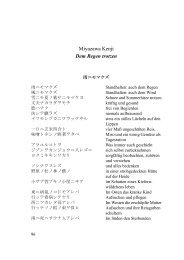
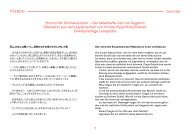
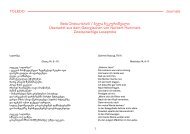
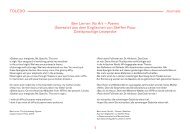

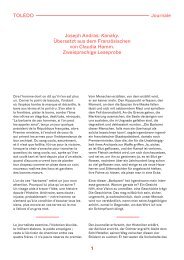
![[13] Perrone_Six Brazilian Songs_Bilíngue_DT](https://img.yumpu.com/65254747/1/184x260/13-perrone-six-brazilian-songs-bilingue-dt.jpg?quality=85)